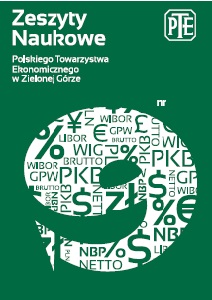Access to medical services and the wealth of Polish citizens
Access to medical services and the wealth of Polish citizens
Author(s): Marta PietrzakSubject(s): Economy, Public Finances, Human Resources in Economy
Published by: Polskie Towarzystwo Ekonomiczne w Zielonej Górze
Keywords: health economics; health policy; medical services; medical care; health; Hart's law
Summary/Abstract: The article attempts to verify the inverse care law (Hart's law) in Poland on the example of the geographic accessibility of medical human resources by citizens. The aim of the article is to analyze selected economic indicators in relation to the ratio of the number of doctors per 10,000 citizens in individual provinces in Poland. The analysis is to verify whether medical practitioners in Poland are guided by the wealth of the citizens of a given region when choosing the place of providing medical services. A research hypothesis was tested, according to which economic indicators - i.e. gross income per capita, gross domestic product, unemployment rate, local public spending on health care, and private household health expenditure – are correlated with density of physicians, i.e. the number doctors for 10,000 residents in a given province in Poland. The correlation was examined using Spearman’s correlation coefficient, and the results obtained showed that there is a geographical variation in access to doctors in Poland and that Hart's law was partially confirmed. Based on the conclusions, a statement can be put forward that, although access to medical services is universal and provided by the state, it varies and is not equal for all citizens.
Journal: Zeszyty Naukowe Polskiego Towarzystwa Ekonomicznego w Zielonej Górze
- Issue Year: 5/2018
- Issue No: 9_EN
- Page Range: 153-163
- Page Count: 11
- Language: English

